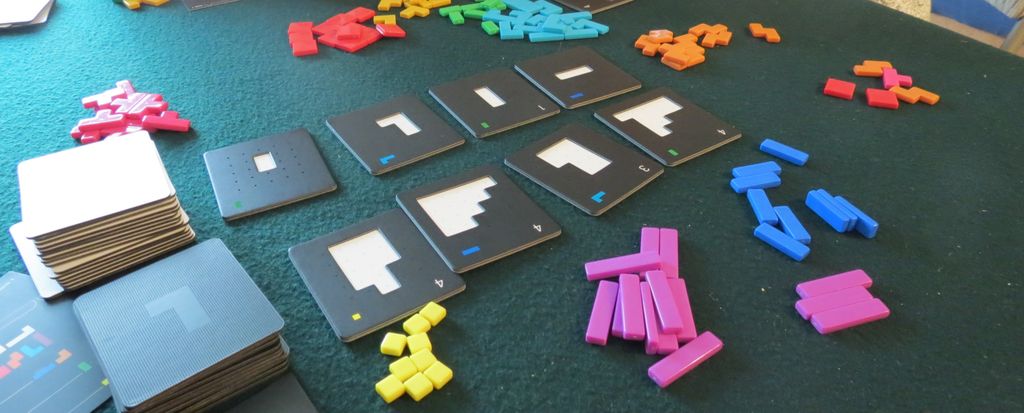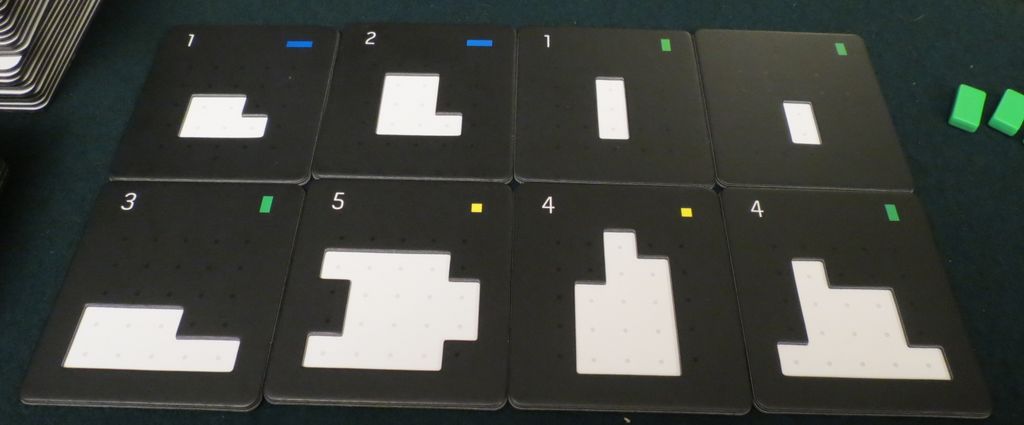Overview
Welcome, fellow board game enthusiasts! Today we dive into the intriguing world of Project L, a game where puzzle efficiency intersects with sleek design, garnished with a fascinating layer of player interaction. Join me as we dissect this gem in our review, weaving personal play experiences with objective critiques of its core mechanics. Are you ready to piece together whether this game deserves a spot on your shelf? Let’s get puzzling!
How It Plays
Welcome to your quick guide on ‘Project L’, a game of optimizing puzzles and strategic efficiency. Here’s a breakdown of how to dive into the action.
Setting up
To start ‘Project L’, each player receives a starter piece and a level 1 puzzle. Place the main pool of colorful, variously shaped pieces within everyone’s reach, and lay out the current puzzles to form the central display. Prepare your engine for everything this game entails by storing pieces in your own reserve as well.
Gameplay
Gameplay revolves around taking actions to pick new puzzles, insert pieces, upgrade or complete puzzles for points. Every round, participants get three turns to strategize, using their pieces like cogs in a brilliant machine to work puzzles into complete pictures.
Winning the game
The game ends once a certain number of puzzles are completed. Players then tally their points – the one with the highest score built by cleverly completing puzzles and accruing upgrades emerges victorious in this captivating balance of quick decisions and long-term strategy.
Want to know more? Read our extensive strategy guide for Project L.
Crafting the Perfect Fit
The heart and soul of Project L review taps directly into that space where puzzling out the best fit becomes an exercise not just of logic, but of efficiency. Onboarding Acceleration introduces players seamlessly, escalating through smoothly paced mechanics that train you in optimizing with every piece you place. During my sessions, transition moments left players animated as they pieced together the perfect puzzle combo, highlighting the joy in mastering these polyomino platforms. Strategizing Under Time Pressure flawlessly meshes, as time constraints push this silent solitaire towards quietly competitive impulses. For me, nothing mirrored the palpable tension quite like a neck-and-neck race to complete a puzzle before a friend.
Stick around, my next move will place us squarely in a conversation on Component Quality and Design.

Project L Review: A Tactile Delight
In the realm of board gaming, Project L stands out with an emphasis on tactile satisfaction.
Premium Touch
The game’s components are undeniably captivating. During one of our game nights, the serene clicking of the high-quality plastic pieces felt like a symphony in motion. The glossy finish not only looks spectacular but also holds up against the wear and tear of regular play, which cannot be said for all games. The allure of well-made pieces turned even the hardcore digital gamers among my friends into tactile enthusiasts.
Sleek Design
More so, the elegance of Project L‘s design makes it an exhibit on your table. Each piece connects seamlessly, celebrating the triumphs of modern minimalism. The dual-layered player boards were particular standouts, adding depth to the aesthetic and play.
Now, let these top-shelf components recede into the backdrop, as the stage is set to discuss the heart of gaming – the player interaction dynamics.

Enhanced by Engagement: Player Interactions in Project L
While diving into the Project L Review, you can’t help but be drawn to its social fabric. The player interaction dynamics bolster the game’s pulse, emitting an energetic beat as each player strategizes amidst others’ tactics. Strategic Socialization There’s a delightful dilemma as the game weaves solitude with shared spaces—you often find yourself calf-deep in analysis paralysis, while also peeking over defenses to identify competitors’ trajectories.
Beginning turns may echo solitaire, but as the endgame approaches, every move is more communal and calculated. Interactive Crescendo Lush with opportunities warranting engagement, whether through benign competition or tile tracking, Project L enhances gatherings with layered decision-making dynamism. Fostering connections without overbearance, it’s the dash of collaborative competition that appeals most.
Ultimately, it’s a definitive ‘yes’ to shelved companionship courtesy of Project L’s heartbeat of comradery.

Conclusion
As we conclude this review, Project L stands out as a striking example of refined, minimalistic enjoyment in the board game domain. Its well-orchestrated ruleset rewards strategic puzzle-solving, while high-quality components elevate the tactile experience. The interplay between players provides a subtle yet engaging layer of competition, making each session a lively and dynamic encounter. Whether you’re a strategy enthusiast or simply seeking an inviting game for casual gatherings, Project L’s thoughtful design guarantees it a place at the tabletop. With this final commendation, we fold the intricate layers of our review, hopeful that it has offered insight and enthusiasm for this gem of a game.


